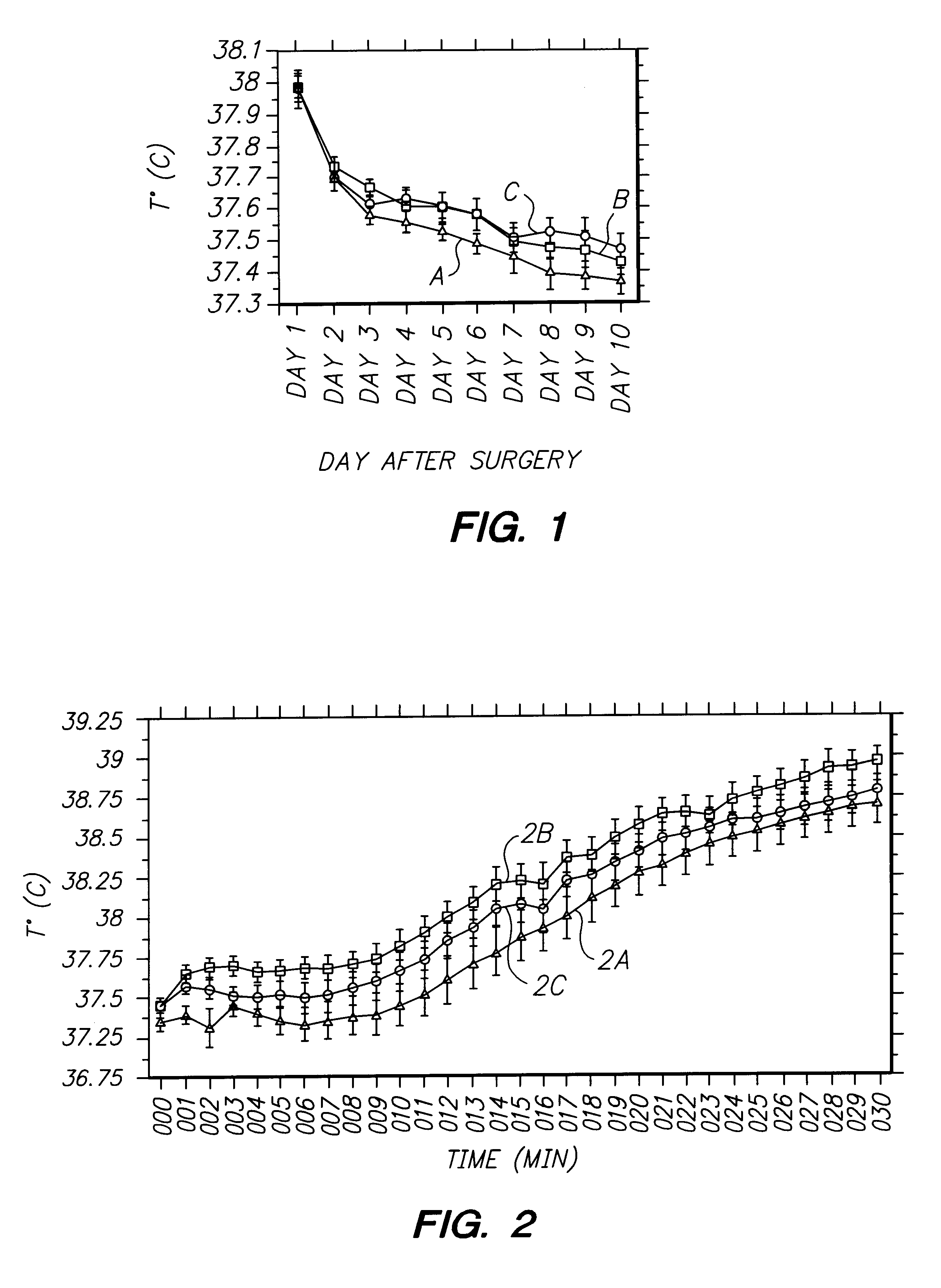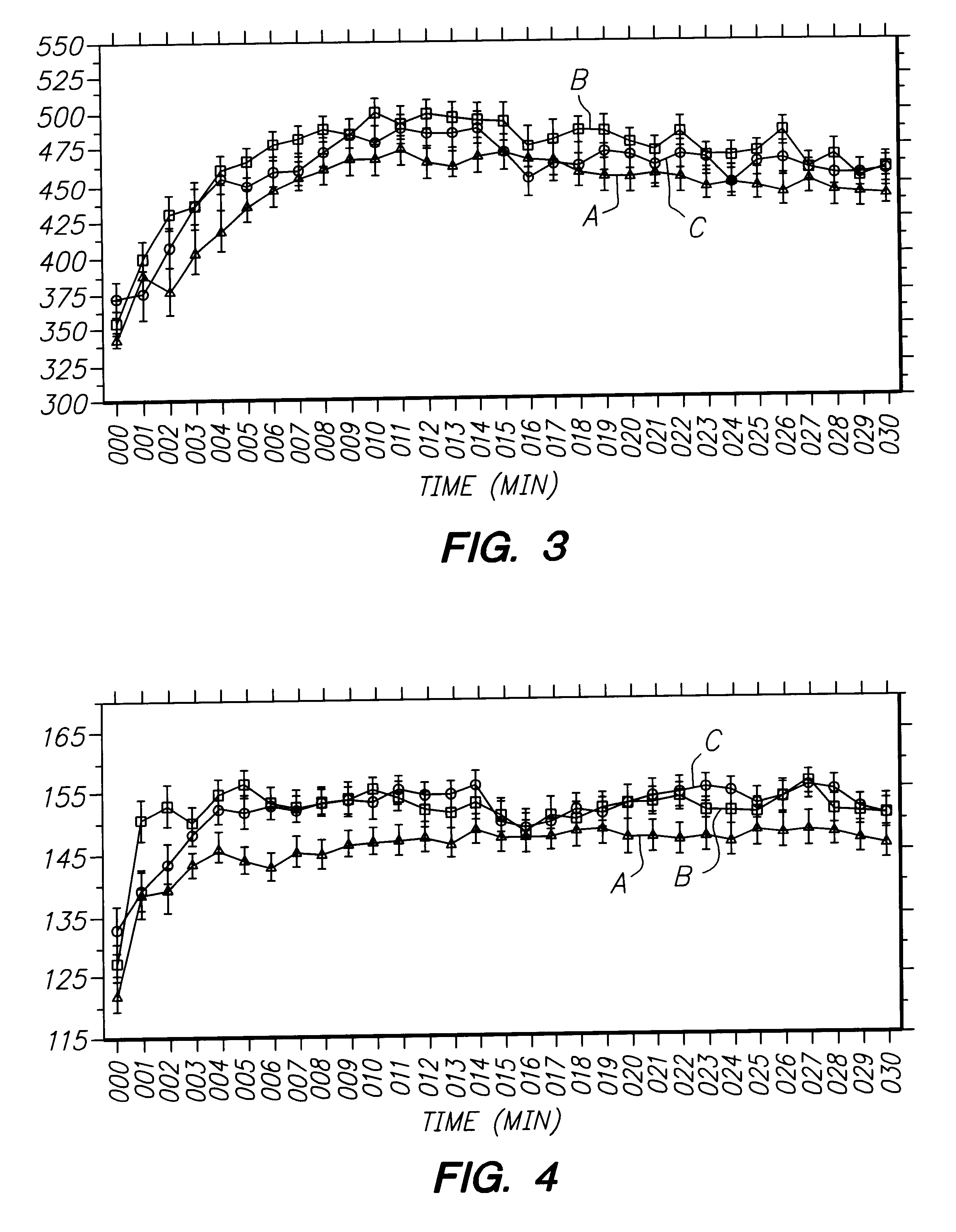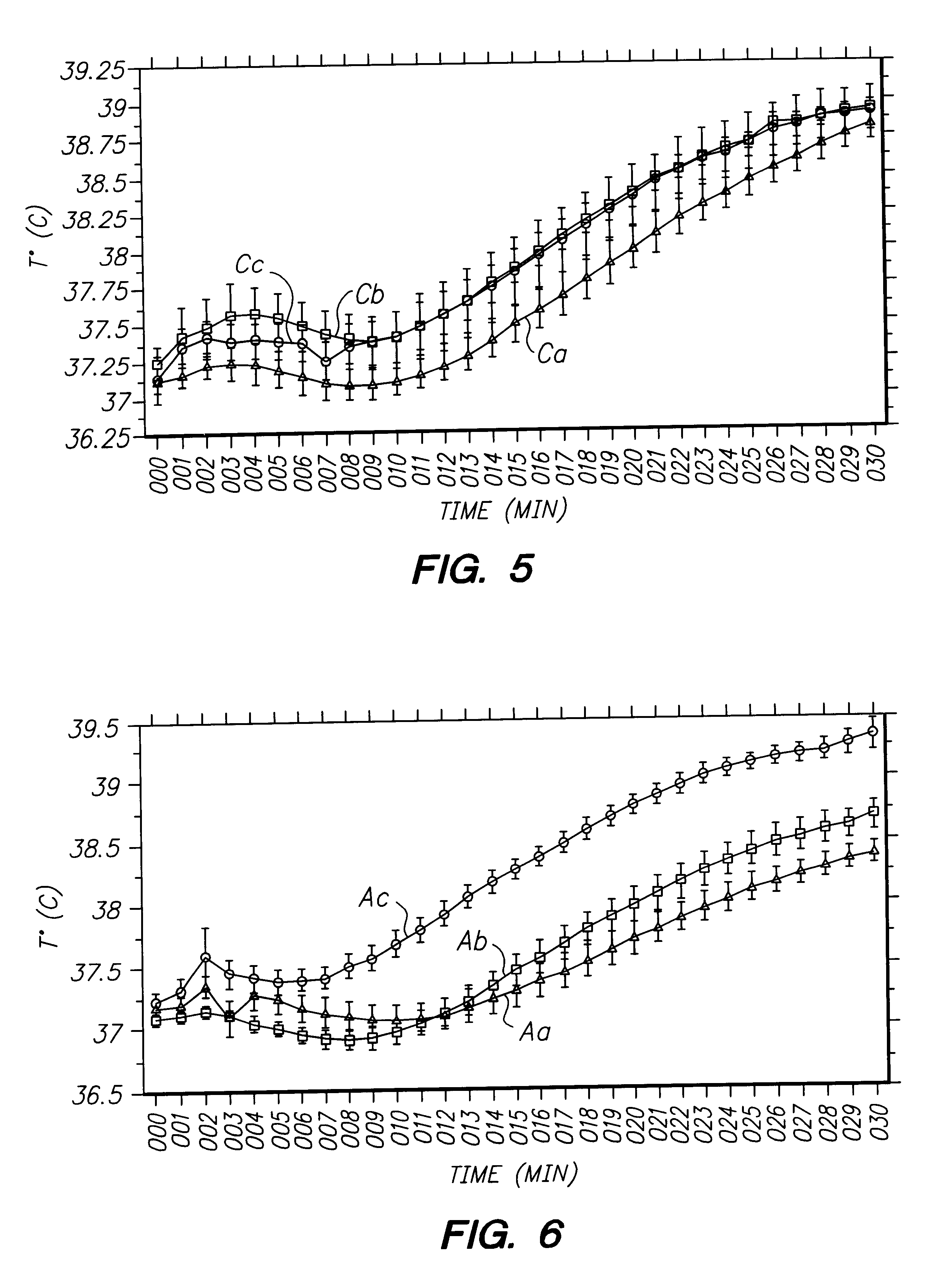Treatment of stress and preconditioning against stress
a technology of stress and preconditioning, applied in the field of stress treatment and preconditioning against stress, can solve the problems of abnormal functioning of body organs, death of cells in organs, and stress's effects can be particularly dangerous
- Summary
- Abstract
- Description
- Claims
- Application Information
AI Technical Summary
Benefits of technology
Problems solved by technology
Method used
Image
Examples
example 1
Blood from sacrificed SHR's of the same strain as the test animals was collected, treated with sodium citrate anticoagulant and pooled. A portion of the blood was then placed in a sterile container, and subjected simultaneously to the UV radiation, ozone / oxygen gas oxidative environment and elevated temperature stressors, in an apparatus as generally described in the aforementioned Mueller Pat. U.S. No. 4,968,483. More specifically, the blood sample in the sterile, UV-transparent container was heated using infrared lamps to 42.5.degree. C., and whilst being maintained at that temperature, it was subjected to UV radiation of wavelength 253.7 nm under the preferred conditions previously described. Simultaneously, a gaseous mixture of medical grade oxygen and ozone, of ozone content 13.5-15.5 .mu.g / ml, was bubbled through the blood sample at a rate of flow over a range from 60-240 mls / min. The time of simultaneous UV exposure and gas mixture feed was 3 minutes.
A further portion of the ...
example 2
The 44 animals treated as described in Example 1, namely the Group A of 15 animals which had received injections of blood treated according to the process of the invention, Group a of 15 animals which had received injection of untreated blood, and Group C which had received injection of saline, 10 days after the probe implantation surgery described in Example 1, were subjected to psychological stress through standard immobilization stress test, by placing them in small restraint cages for a period of 30 minutes (age of animals--11 weeks). During this immobilization period, readings of body temperature, blood pressure and heart rate, at one minute intervals, were recorded.
Accompanying FIG. 2 of the drawings is a graphical presentation of the results of the body temperature measurements of the three groups, namely a plot of time as ordinate against body temperature as abscissa over the 30 minute duration of the immobilization stress test. As FIG. 2 shows, curve 2A derived from experim...
example 3
The Group C animals from Example 2, i.e. the control group which had, at age 7-9 weeks, received injections of physiological saline, were divided into three sub-groups Ca, Cb, and Cc. Each group was given a course of 10 daily injections of, respectively, 150 .mu.l of the treated blood, 150 .mu.l of the untreated blood, and 150 .mu.l of physiological saline. The course of injection started when the animals were 12 weeks old, i.e. fully matured adults. The telemetry probes remained in place. The same 30 minute immobilization stress test was performed on each animal, at age 16 weeks, and measurement of heart rate, blood pressure and body temperature were taken.
In body temperature response, the group Ca injected with blood treated according to the process of the invention showed a significantly more blunted increase during the stress period. This is illustrated in FIG. 5, a graphical presentation of the results similar to FIG. 2. It can be seen that curves Ca, derived from the Group Ca ...
PUM
 Login to View More
Login to View More Abstract
Description
Claims
Application Information
 Login to View More
Login to View More - R&D
- Intellectual Property
- Life Sciences
- Materials
- Tech Scout
- Unparalleled Data Quality
- Higher Quality Content
- 60% Fewer Hallucinations
Browse by: Latest US Patents, China's latest patents, Technical Efficacy Thesaurus, Application Domain, Technology Topic, Popular Technical Reports.
© 2025 PatSnap. All rights reserved.Legal|Privacy policy|Modern Slavery Act Transparency Statement|Sitemap|About US| Contact US: help@patsnap.com



